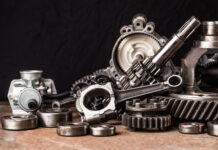The “appearance, but don’t touch” rule at the Fort Lauderdale Antique Car Museum was, suspended on a current Tuesday morning. Wearing white gloves to defend the cars, about 20 traveling teenagers ran their fingers over the huge, steeply-priced Packard automobiles. They poked the 2-foot tires, caressed the leather-based seats, and palmed the steering wheels twice the dimensions in their heads.
“It’s truly thrilling because I can see the differences, and a few similarities, compared to motors nowadays through touching them,” stated Silvio Plata, 15. “It’s near as though I had eyes and could see the structure, and I can get an idea of what they’d returned them.” Silvio and the alternative teenagers, traveling from the Miami Lighthouse for the Blind and Visually Impaired, listened as assistants defined the handfuls of vehicles coated around the shop so that through their senses of touch and hearing, they could “see” the automobiles.

The museum goes to become part of the company’s transition program that targets to put together young adults for future activity opportunities, said Carol Brady-Simmons, the chief application officer. It also places a unique consciousness on impartial dwelling and conversation abilities one desires for employment and college. “Someone who’s blind can do whatever a sighted man or woman can do. They should do it otherwise,” she said. “But it’s crucial that those kids get blind and technical competencies early to be included in society.”
The vintage vehicle museum has become one of many field trips the group takes to train the children approximately special industries, Brady-Simmons introduced. They have visited the Holocaust Documentation and Education Center, a Costco Wholesale shop, and a Florida Panthers hockey hospital, Brady-Simmons said. Bob Jacko, leader healing officer for the Fort Lauderdale Antique Car Museum, welcomed the institution with a quick history lesson approximately the vehicles, several of which date to 1908.
Jacko instructed the teenagers that Packard cars have been custom constructed by hand, which changed into why they have been so steeply-priced. He explained how many paintings went into developing these almost 5,000-pound steel beasts ahowway the museum has maintained them for many of these years, which spurred several questions.
“How fast can it pass?”
“How good deal of gasoline can it maintain, and what gas do you install?”
“How do you preserve these motors so vivid?!”
Jacko responded al ,without difficulty while additionally imparting visible descriptions of the motors and length, color, various elements, and layout. Virginia Jacko, the president of Miami Lighthouse and Bob Jacko’s wife, said it’s important to talk with blind and visually impaired men and women like anyone else. Hence, it’s less difficult for them to assimilate into society. She stated that when humans see a person with a cane ora seeing-eye dog, they often attempt to talk with them thru any other man or woman rather than speaking directly with the blind individual.
Miami Lighthouse’s application has a “large impact on thousands of youngsters’ lives,” she said, as it teaches them how to speak with others and actively encompass themselves efficiently. “Just to peer them grow and discover ways to suggest for themselves, it makes us so happy with them,” stated Virginia Jacko, who lost her vision some years ago.
The teenager program, which currently has 42 individuals, brings youngsters collectively from colleges across Miami-Dade County; not best to analyze these fundamental abilties, however, to meet others who are blind or visually impaired. Kaden Jamie, 13, said he became the most effective blind pupil at his middle faculty. A self-proclaimed social butterfly, blindness didn’t forestall Kaden from making pals and interacting with other college students. Still, he stated he loves being surrounded by others like him at Miami Lighthouse.


























